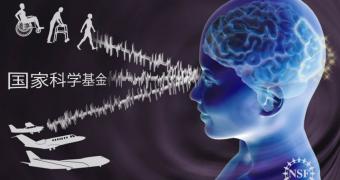City College of New York investigators, led by neuroscientists Tony Ro, are currently working on a new method of restoring sight to patients who went blind following accidents that damaged the visual cortex at the back of their brains.
In this population, the eyes and optical nerves are intact, and produce electrical impulses, but the visual cortex is no longer capable of processing them, and converting them into the sensation of sight. This condition is called blindsight.
Ro is currently replicating this condition inside the lab. Results he and his group obtained thus far indicate that it may be possible to restore vision in these individuals. The work is funded by the National Science Foundation (NSF) Directorate for Social, Behavioral and Economic Sciences.
One of the most important things to realize in this field of research is that there are many areas of the brain that receive visual impulses from the eyes and optical systems, but that not all of these regions allow us conscious access to the data.
“Blindsight is a condition that some patients experience after having damage to the primary visual cortex in the back of their brains. What happens in these patients is they go cortically blind, yet they can still discriminate visual information, albeit without any awareness,” the team leader explains.
This is why his team is currently focused on analyzing all areas of the brain involved in sight, in a bid to determine the role each of them plays in visual awareness. The investigators are studying everything other than the visual cortex itself.
Ro says that recreating blindsight in the lab involves using strong magnetic pulses, lasting for only fractions of a second, to temporarily blind volunteers. At the same time, a shape flashes in front of test subjects' eyes, while researchers scan their brains.
This enables the study group to figure out what areas of the brain other than the visual cortex are involved in underlying sight. The artificial “blindness occurs very shortly and very rapidly--on the order of one twentieth of a second or so,” Ro explains.
“There are likely to be a lot of alternative visual pathways that go into the brain from our eyes that process information at unconscious levels,” the scientist adds. Any discoveries made in this research could lead to the development of therapies against blindsight.
This would come in very handy for treating veterans returning home from the war. Many of them have brain damage, and some of them have had their visual cortex affected by explosions or other injuries.

 14 DAY TRIAL //
14 DAY TRIAL //